SINGAPORE HERITAGE SOCIETY’S STATEMENT ON LISTING OF BUKIT BROWN ON 2014 WORLD MONUMENTS WATCH
10 October 2013
The Singapore Heritage Society is heartened that Bukit Brown has been included in the World Monuments Watch list for 2014.
Founded in 1965, the World Monuments Fund, which runs World Monuments Watch, is based in New York and is the world’s leading independent organization dedicated to saving mankind’s treasured places. Its expertise and resources, including support from UNESCO, have helped restore some 600 sites in more than 90 countries.
On this year’s Watch List is also Pokfolum Village in Hong Kong, while other sites listed in previous years include the Buddhist Remains of Bamiyan (destroyed by Taliban in 2001), the historic Gingerbread Neighborhood of Port-au-Prince, Haiti (damaged by earthquake), the Cultural Heritage Sites of Syria (destroyed or damaged in the civil war) and Penang’s Georgetown Historic Enclave (2000 and 2002 Watch List) which is now a UNESCO World Heritage site.
This is the first time a Singapore site has been included in the World Monuments Watch. Together with the Singapore Botanic Gardens’ UNESCO nomination, Bukit Brown’s inclusion represents widespread international recognition of the historical importance of local heritage sites. Indeed, Bukit Brown’s narrative of early immigrants and regional histories complements the Botanic Garden’s narrative of colonial empire to provide a more complex and complete story of Singapore.
The nomination of Bukit Brown for World Monuments Watch inclusion was advanced by the community group, All Things Bukit Brown. This has been a grassroots initiative in response to Prime Minister Lee’s National Day Rally call to Singaporeans to step forth to make Singapore a better home for ourselves.
It is also in keeping with independent surveys on heritage awareness in Singapore. The 2006 Heritage Awareness Survey revealed that almost all Singaporeans surveyed (98.4%) felt that heritage plays a positive role in their lives and that an overwhelming 90% agreed that preserving our heritage would become more important as Singapore moves towards becoming a global city.[1] The survey also revealed that 87% of Singaporeans agreed that a better understanding of Singapore’s history and heritage would increase their own sense of belonging to Singapore. Meanwhile the 2013 Our Singapore Conversation survey showed that Singaporeans wanted heritage spaces to be preserved as far as possible.[2]
This World Monuments Watch inclusion is not a one-off event but part of an on-going series of Bukit Brown-related events such as symposiums, exhibitions and public talks that have been organised by citizens and community groups that have been taking place since November 2011.
Finally, the inclusion in the World Monuments Watch 2014 list is in keeping with the Singapore Heritage Society’s call for Bukit Brown to be gazetted as a heritage site. This inclusion should be seized as the opportunity to raise greater awareness of Bukit Brown and to conduct comprehensive documentation of the greater Bukit Brown space that includes the Seh Ong, Kopi Sua and Lau Sua cemeteries, which will provide the basis for future preservation plans.
[1] Channel News Asia (18 July 2007) Heritage awareness rising among Singaporeans: study; see also http://www.heritagefest.org.sg/2007/official/images/stories/Downloads/press_release_shf2007_opening_ceremony.pdf (accessed 8 Oct 2013)
[2] https://www.oursgconversation.sg/wp-content/uploads/2013/08/OSC-Survey.pdf (accessed 8 Oct 2013)
Dateline 6 October 2013
A tomb with a loving epitaph was found by Brownie Simone Lee at Kopi Sua today . It reads:
A bitter grief
A shock severe
to part with one
I love so dear
My loss is great
I wont complain
But hope through God
to meet again
In memoriam
my dearly
beloved father
Gone but not forgotten
Kopi Sua – a clan cemetery – is part of the Greater Bukit Brown Complex which includes Bukit Brown Municipal Cemetery and the adjoining clan cemeteries of Seh Ong and Lao Sua. Together they have a combined total of 200 tombs
Dateline 27 September 2013
This morning descendants and members of the Poit Ip Huay Kuan marked the 130th anniversary of Teochew leader and King of Gambier, Seah Eu Chin (1805-1883). In November 2012, his grave was found by the Goh brothers, Raymond and Charles. And since then descendants have been making tracks up to Grave Hill, in Toa Payoh to pay their respects.
“Under the initiation of Teochew Poit It Huay Kuan and the endorsement of Ngee Ann Kongsi, it was a great moment in current Singapore Teochew history that many Teochew Organizations and Seah family members gathered at Seah Eu Chin’s tomb for a memorial service for his 130th death anniversary.” Zaobao 28 Sept 2013 (translated by Raymond Goh)
Today offerings were made at the grave which had been prepared for the occasion. Thank you to Brownie, Khoo Ee Hoon for documenting this commemoration of Seah Eu Chin.
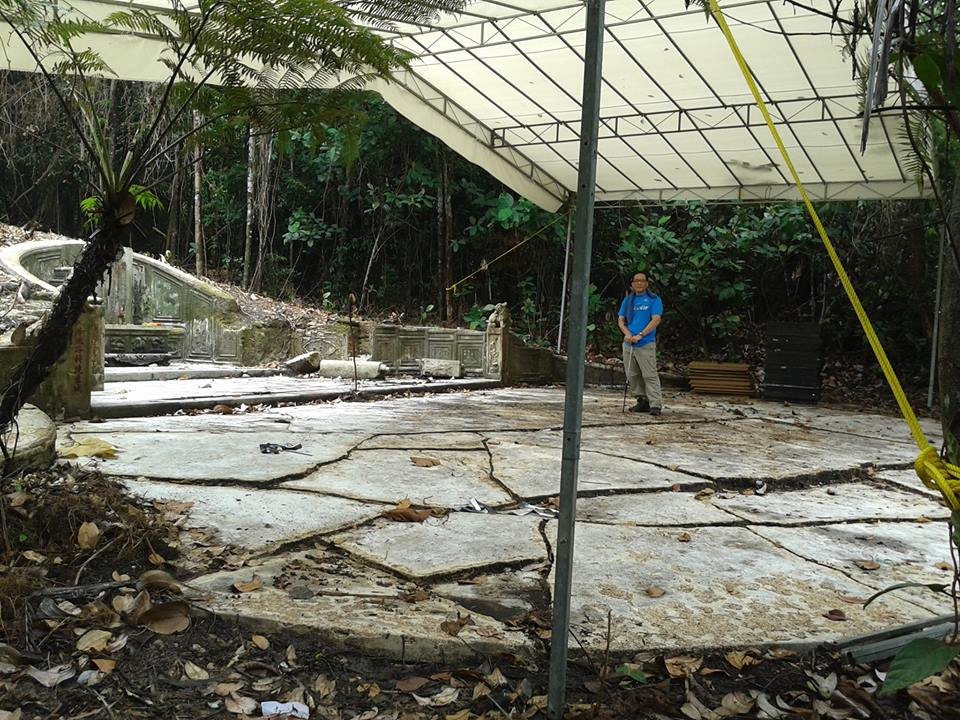
2 days before the 130th Anniversary when the Brownies visited, the marquee was already up and grave cleared (photo Catherine Lim)
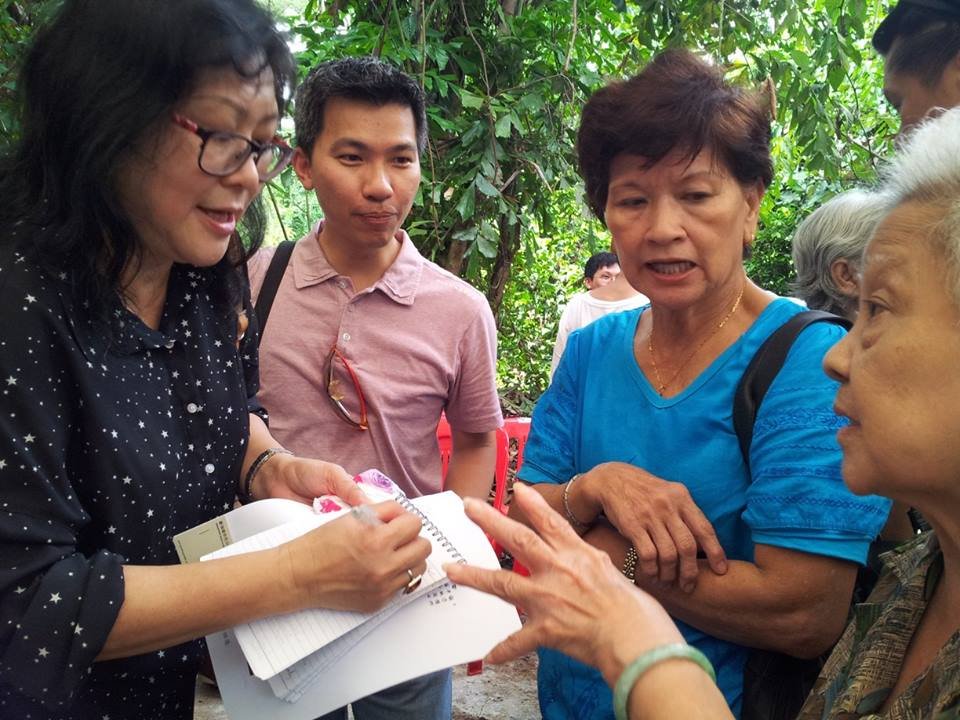
Zaobao reporter Yen Yen who covered the discovery of Seah Eu Chin’s tomb a year back was at the 130 Anniversary to interview descendants ( photo Khoo Ee Hoon)

Members of Poit Ip Huay Kuan who were responsible for the major preparations for the 130 Anniversary of Seah Eu Chin (photo Khoo Ee Hoon)
Both Raymond and Charles Goh were in attendance at the anniversary this morning.
Postscript: Raymond reporting from the event posted this photo on the facebook group page.
“”It is a remembrance ceremony on the occasion of 130th death anniversary of Seah Eu Chin’s death. An eulogy was read out during the memorial service.”
From Sugen Ramiah commenting on the layout of the offerings on the table : What you see above is a Teochew style remembrance. What is seen follows a hierarchy – 5 sets of rice, wine and tea served . Twelve buns/kuehs, odd numbers of poultry and seafood and odd numbers of fruits offerings.
There were 3 chairs placed in the front of the offerings (not seen in the photo above)
From Tay Hung Yong: The three chairs are meant for Seah Eu Chin and his two wives (correct me if I am wrong). The 5 sacrificial animal offerings are quite common among Southern Chinese. There should be at least 8 different dishes. Twelve buns represent 12 months in the calendar. For Teochews, fruit offerings are usually in 4 not 5. The joss paper they offered are usually meant for deities.
Editors note: In any ritual there are different interpretations on how they are conducted and how the different offerings are laid out.
Mian-Yu-Ting Cemetery, Johor (Part II)
by Choo Ai Loon
(Ai Loon continues from part one of her blog post on Mian-Yu-Ting Cemetery )
Among the tombstones at the Mian-Yu-Ting , is one belonging to Wu You-Xun (邬有询), which pays tribute to his alma mater, Chinese High School (華僑中學 in traditional Chinese characters)
A student with a promising future, Wu You-Xun (邬有询) aspired to become a doctor, In 1920, after completing his Senior Cambridge examination (equivalent to GCE “O” levels) , he enrolled at Chinese High. He graduated among the first batch of students, two years later. In the graduation year book, he was described as a hardworking student who “had no time to chit-chat as time was too precious”.
Wu excelled in English and was a committee member of an English speech society, which I presume was the “Nanyang version of the Toastmasters Club”, and chief editor of an English magazine.
But alas! Wu passed away at just 22 years old, a year after graduation. Inscribed on his tombstone is “graduate of Chinese High School” is a reflection of how proud he must been of his school
In contrast, one grave has only 3 characters inscribed but no name. Gu-ren-mu (古人墓), literally means “the tomb of someone who has passed away”.
This typical Teochew tomb which resembles an arm chair, a pair of couplets in red on the scroll pillars.
The arms of the tomb curve gracefully and there is a dragonhead carved on it The usual practice of depicting the whole dragon it seems has been adapted to just a dragon’s head. I have observed these variations in motifs and representations. This dragon appeared benign compared to the fierce-looking ones found in older tomb carvings.
Another grave had steps leading up the tombstone perhaps imitating a stupa, influenced by Buddhism.
The Tomb of She Mian-Wang
She Mian-Wang (佘勉旺), belonged to a wealthy Teochew family. The surname “She” is more commonly spelt as Sia or Seah.
The She Mian-Wang family profile in Johor parallels that of the Seah Eu Chin in Singapore. Both families had made their fortune from the cultivation and trade of gambier.
Seah Eu Chin’s tomb was discovered in 2012 within Greater Bukit Brown, in a forested area called Grave Hill in Toa Payoh West, Singapore. He co-founded and led the Ngee Ann Kongsi in Singapore, to look after the religious needs and welfare of early Teochew migrant workers.
Similarly, She Mian-Wang was an important figure in the Ngee Heng Kongsi The enormous plot size and the expansive tomb arms of She’s grave reflects his status and wealth in those days. Interestingly, his tablet is enshrined and worshipped at Pu Zhao Chan Si Temple (普照禅寺) in Singapore.
So could these two powerful families in the Teochew community be related? I leave you with this parting thought .
My thanks once again to Mr Bak Jia How and Mr Pek Wee-Chuen for the insightful and enjoyable tour of Mian-Yu-Ting.
Thanks to Mr Bak Jia How and Mr Pek Wee-Chuen for the insightful and enjoyable tour.
Choo Ai Loon, works as a translator and is passionate about art and heritage, She supports Hair for Hope for children with cancer. She blogs at http://chooailoon.wordpress.com/2013/05/05/hair-for-hope-2013/
by Choo Ai Loon
The Mian-Yu-Ting Cemetery (绵裕亭) across the causeway in Johor, Malaysia, has an area of about 60 acres. The cemetery which has been closed for burial includes a casket company, a crematorium and two columbaria, among other facilities.
I attended a tour of the cemetery led by Mr Bak Jia How and Mr Pek Wee-Chuen who are alumni of Foon Yew High School in Johor. The tour was to commemorate the 100th anniversary of the school, and dedicated to two of the four founders who were laid to rest in Mian-Yu-Ting.
We also visited the graves of other contributors to Foon Yew and stories about them were shared. At the same time, I learned other interesting facts about the graves, in particular, the meaning behind the unique inscriptions .
The land for the cemetery was a gift by Sultan Abu Bakar in 1885. In the 1920s, due to poor management, burials had mistakenly crossed over onto an adjacent piece of land. That land was owned by a tycoon, Al-Habib Hasan bin Ahmad al-Attas of Arab origin, but born in Malaya. He however kindly agreed to donate a part of the land to the cemetery. As a token of gratitude, a Rosetta stone was erected within the compound to remember his generosity.
The Chinese character “氵月” on the tombstone circled below means ‘Qing (Dynasty) without a leader’ (清无主). This was a secret word created to symbolise the movement to overthrow the Qing Dynasty (1644-1912) and to revive the Ming Dynasty (1368-1644).
However, engraving the character on a tombstone in Nanyang (Southern Seas or south of China) in the last 200 years did not necessarily mean one was active in the movement. It can be interpreted to symbolise the unity among members from a certain cohort or gang, formed by early Chinese migrants to Nanyang.; in this instance, the Teochew community.
Notably, most of the tombs in Mian-Yu-Ting that carry “氵月” character are on Teochew tombs and not found on the Cantonese tombstones there . Have you seen the same character at any tomb in Bukit Brown?
There is tomb adorned with Majolica tiles which was built when the Ngee Heng Kongsi was ordered to dissolve in 1919. The Ngee Heng Kongsi was a powerful Teochew gang in Johor and an offshoot of the Tian-Di-Hui (天地会) secret society in China. The society aimed to topple the Qing Dynasty so as to reinstate the Ming Dynasty.
That said, the overseas offshoot of Ngee Heng Kongsi was largely committed to taking care of the welfare of early Chinese immigrants. When it wound up, a fraction of its funds was spent on building this tomb, with the Chinese words of Ming-Mu (明墓), meaning Ming tomb, engraved on the headstone.
The remaining fund, a substantial sum at that time, was donated to Foon Yew School. And in return, the school would have to perform rituals at the tomb twice a year, on the 3rd day of the third Lunar month (spring) and the 25th day of the seventh Lunar month (autumn). For almost a century now, the school continues to fulfil its promise.
No one was buried under the tomb. Instead, a catacomb was said to have been built to place ancestral tablets of important members of the gang, and to safe keep sacred objects. Notably, Ngee Heng Kongsi had established one of the earliest Chinese settlements in Johor. We certainly won’t be where we are today without our pioneers.
Here are some highlights from other graves
At one grave, there is a larger-than-usual placement of the Guardian Deity of Earth which is comparable to the one at Ong Sam Leong’s in Bukit Brown.
In Singapore and Malaysia, the Guardian Deity of Earth may be addressed in Mandarin as Tu-Di-Zhi-Shen (土地之神), just like the one in the photo, or Hou-Tu (后土) or Fu-Shen (福神). Have you seen another name being used in Bukit Brown?
A mythical creature Ao-Yu (鳌鱼) has a dragon’s head and a fish’s body, it is believed to have transformed from a carp.
I hope these discoveries may lead you to exclaim “oh I see!”; or trigger a memory: “oh I have seen this somewhere before!”.
I would like to thank Pek Wee-Chuen and Bak Jia How, for an enjoyable tour and sharing their knowledge with me.
Look for part 2 of my journal on Mian-Yu-Ting. Highlights include, a Johorean connected to a high school in Singapore and, the story of a family business which parallels that of Teochew leader, Seah Eu Chin.
Choo Ai Loon, works as a translator and is passionate about art and heritage, She supports Hair for Hope for children with cancer.
She blogs at http://chooailoon.wordpress.com/2013/05/05/hair-for-hope-2013/
by A.J Leow
My trips to Bukit Brown Cemetry tend to stir up some deep-seated emotions within me. My first, which followed a trip to Gardens by the Bay, had evoked images of contrast. On one hand, there is this rich but neglected repository of our cultural and natural heritage amid the lush, unkempt undergrowth and the other, an artificial construct or what I would often refer to as a huge manicured bonsai.
At the Gardens, you put on a headset; pressed some buttons to listen to a disembodied voice on a guided tour. It’s like calling your bank to cancel the annual credit card charge. Quite impersonal. At Bukit Brown, there are no ticket queues, entry fees or closing hours. You get to pepper some guy – in a sweat-soaked T-shirt with a towel around the neck – with questions about our forgotten past.
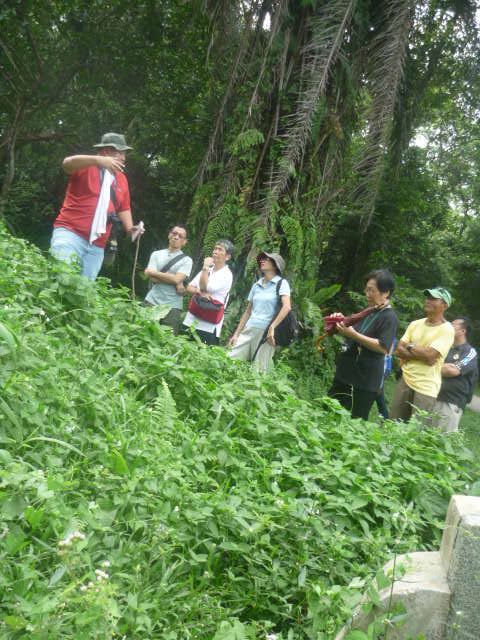
Uphill is a breeze with Brownie Peter Pak telling stories of our forgotten pioneers (photo Catherine Lim)
The bonus is that you may be invited to join the Brownies at a zhi char place after the tour for a get-together makan. How much more Singaporean can you get!
My latest trip came about on National Day 2013 which was followed by a family viewing of the annual parade and the fly-past. While the vignettes of our forefathers by the guides at Bukit Brown – especially that of how they arrived by sea and spied the shimmering lights of the harbour of 星汌 (Isle of Stars) which must have lifted their hopes of a better tomorrow – touched many a chord; the vain exhortations by the emcees at the waterfront parade to portray the Merlion as a national symbol fell really flat, especially when the mythical creature wasn’t sure if it was a lion or a transgendered mermaid. To me, it was an apt metaphor of our confused national identity.
Not so the narrative of Bukit Brown.
At the official parade, there was an actress masquerading as a samsui woman. As a young boy heading off to school, I have seen scores of these weathered-beaten, hardy red-hat women from southern China squatting and lining the roadside, some of them holding rolled-up cigarettes with their calloused hands in the early hours of dawn at Redhill Road. I can assure you, none of them look like the ruddy faced actress on the national stage!
The contrast could not be more stark. Listening to the story-tellers at Bukit Brown to me would be akin to reading a rich body of literary work by local author Catherine Lim, or the playwright Kuo Pao Kun. Bukit Brown is our history; while some of the NDP performances came across like a fleeting piece of newspaper ad or TV commercial. Not quite authentic.
The next day, I picked up a copy of The New Paper to read its coverage of the Brownies’ tribute to our country’s early pioneers. On the following page was a piece on the make-up of the hardcore Singaporean. There were the usual comments about the use of Singlish, the tendency to gripe; pressing lift buttons repeatedly and oh dear, even ‘common resentment towards foreigners.’ The MP for Marine Parade GRC, Tin Pei Ling, mentioned the love for chicken rice, our hardworking nature and the willingness to stay and defend the country during a crisis. Except for the first item, I wouldn’t call that a uniquely Singapore trait.
There was little mention about our heritage and our forefathers who helped build the place we now call home. On an existentialist level, they seem to be no longer part of the wellspring of our national consciousness – the collective National Soul. Are we in danger of becoming the equivalent in Plato’s Cave, bereft of our true identity, which seems to have been reduced to the image of a buffet of laksa, char kuay teow and other hawker’s fare, and a limited lexicon of words such as ‘kiasu’, ‘chope’ and ‘shiok’? Surely, being Singaporean is more that that!
It’s unfortunate that for most of us (that includes me); the history of Singapore has been largely bracketed by or reduced to the two Rs – Raffles and the founding of our Republic. The first is a man in white; or rather a statue in marble white next to the Singapore River, whom most of us don’t really know much about except that his name has been hijacked for a hotel, school, business hub, shopping mall among others, including Singapore Airline’s business class. The second R would be the story of the Men in White, which I bet many of the younger generation would be clueless of who they are or were, with perhaps the exception of our elderly statesman, Lee Kuan Yew.
There’s a yawning chasm in between the two Rs. We need to fill them with what would be the equivalents of our own versions of Benjamin Franklin, Rockeller, Carnegie, and Edison in the largely blank pages of our own history. Names like Tan Ean Kiam (banker and philanthropist), Lim Kim Seng (Justice of the Peace and Teochew leader) and Tan Kim Ching (Kapitan Cina and diplomatic consul to Siam, China and Russia) and bring them back into our national consciousness and collective memory. Make it kind of a Lazarus Project with a uniquely Singapore theme.
That’s why I feel strongly that Bukit Brown Cemetery is a heritage landmark worth saving for the sake of all Singaporeans – now and the future. It’s where the national soul resides. It’s a living museum with names that most Singaporeans can readily identify with, such as the bus routes we take to work (Jalan Boon Lay); MRT stations (Boon Keng); schools we go to (Gan Eng Seng) and makan places (Joo Chiat Place), to name just but a few. There are more than 40 names of streets and places which can be traced back to Bukit Brown.
What’s more, I can imagine their descendants mingling among us – cheek-to-jowl in the MRT and buses; in the queues at NTUC supermarkets; for Toto and 4-D tickets and the char kuay teow stall at Hong Lim complex.
Our forefathers came from afar across the seas – many as coolies including my own grandfather – and caught a glimpse of 星汌 and like the biblical story of Abraham, their descendants have multiplied like the ‘stars’ they imagine to be the bright lights of the future. They chose to come, live, die and be buried here. We owe our presence to them. We need to remember and honour them. The story of Singapore is built on the backs of immigrants, and we should keep on telling their stories unceasingly. More will come because of they have built, what we will build on the foundations they laid. Those newcomers too will catch a glimpse of the shimmering lights of 星汌 (Isle of Stars) when their planes fly over Changi International Airport. Majullah Singapore!
Bio: A.J. Leow is the grandson of a coolie who has brought his children to Bukit Brown several times to understand their roots. His family celebrated National Day at Bukit Brown this year.
Related:
History of the Dead, Heritage of the Living
“It started off as a dream. A dream to create a video where one or more musicians play beautiful music as they explore the ‘invisible’ gem of Bukit Brown “
Environmentalist Cuifen wanted to make Bukit Brown more “visible” to share its beauty and tranquility.
The result ” Ukelady meets Ukebaba in Bukit Brown Conversations”
Please share, and share and share this video and let it go viral, so others can enjoy Bukit Brown too!
More on Cuifen’s thoughts on Bukit Brown in her blog Conscious Steps
Cuifen would like to thank :
Ukelady – Yen Lin
Ukebaba – Su Min
Video editor – Jasmine
Video & mic equipment – Ee Hoon
The Dancing Lanterns by the Youths of Bukit Timah Seu Teck Sean Tong
Sugen Ramiah
Apart from satisfying the hunger of the wandering spirits and entertaining them with boisterous live stage performances of the Getai, the seventh lunar month is also meant for the living. Business owners, wet market and hawker center associates, during this period to pray for peace, smooth sailing and thriving ventures. The members of the Tanglin Halt Wet Market invited the Bukit Timah Seu Teck Sean Tong to conduct their annual seventh month rituals, which was held on the twenty ninth day of the seven lunar month (3rd of September 2013).
Akin to the Teochew rituals at Chui Huay Lim Club, an entire day was spent to fulfill the needs of the wandering spirits. As dusk drew near, the focus was diverted to the living; as they recited the guan yin sutras, asking for bountiful blessings upon the supplicants. One of the highlights of the evening was the “dance of the auspicious lanterns” or also known as ‘kee hock pau teng‘ in Teochew
These are the common red lanterns found suspended at entrance of the house, oval in shape and adorned with golden tassels. In reality, there is no underlying dogma to this presentation; however this is done to extend their (the temple) appreciation to the organizers who engaged them and to amuse them with a little folklore.

The common red lanterns which are oval in shape, adorned with golden tassels which can be found hanging at the entrance of a house (photo Sugen Ramiah)
The performance began with the dimming of the interior lights of the temporary altar, to create the perfect ambiance. The youths of the temple, draped in white robes with green sashes across their waist, then marched in with the new lanterns.
It was accompanied by a beautiful Teochew repertoire of strings and percussion. As the tempo gradually increased, the youths sprang into acrobatic actions with their lanterns creating rhythmical movements. Every single movement found expression in their faces. The radiating positive energies exuded by these young men were bound with the lanterns, thus transforming them into auspicious items.

This is the energy that burns in the passionate youths that makes the lanterns auspicious ( photo Sugen Ramiah)
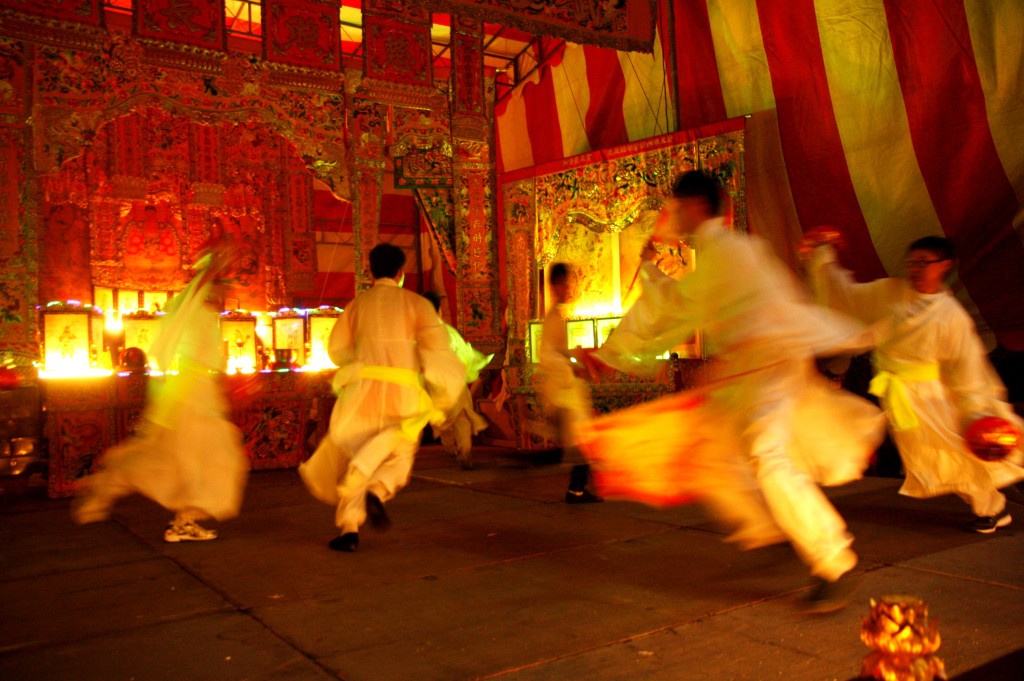
This is the energy that burns in the passionate youths that makes the lanterns auspicious (photo Sugen Ramiah)

The final pose struck at the end of every piece, Kelvin (front) Yishun (left) and Matthew (right) (photo Sugen Ramiah)
Flags of various colours were also carried in this ritualistic dance. These twelve pairs of auspicious lanterns and flags were then placed for bidding during the auction dinner the following day.
The ceremonial dance concluded with a roaring ‘huat ah’ by the youths as the organizers received and hung the lanterns on the bamboo poles. These lanterns purchased during the auction will be taken home and will be returned the following year.
Sugen Ramiah a teacher by training, has been observing and documenting Chinese festivals and rituals conducted by temples for the past one and half years.
More on the Hungry Ghost Month from Sugen here and here .
by Sugen Ramiah
The rituals (Part 1) by Xuan Jiang Dian (Tortoise Hill temple) had begun with the gathering of lost souls, followed by purification and the granting of salvation. Now what remained was the sendoff, the rites of passage for the souls to transcend into the final phase – reincarnation.
As the temple volunteers busied themselves with preparations, family members streamed in, with offerings of food, drinks and flowers – a final meal for the souls. The menu included local delights such as the ‘apom’ (coconut pancake) and ‘roti prata’ with curry.
Taoist priests draped in beautifully woven majestic vestments walked through the rows of tablets chanting the scriptures.This was followed by the tossing of offerings (which had been blessed) to the “yeow kui (literally hungry ghosts). Offerings such as sweets, flowers, fruits, joss papers, a whole chicken and even pieces of pork belly were thrown before a group of supplicants waiting to catch them.
With the altar table emptied, the celebrants then performed “mudras” – a series symbolic hand gestures which are believed to be imbued with energies.
As dusk approached, we were treated to an uncommon sight of the ‘Ku-Dong’. The ‘Ku-Dong’ is a pair of big headed dolls, identical to the common ‘Dua Tow’. The commonly seen ‘Dua Tow’ has a gleaming smile and often bounces jovially to the sound of the ‘gongguan’ (percussion troupe). The Ku-Dong however, expresses extreme grief with tears streaming down its rosy cheeks.
The Ku-Dong crawls on its knees and wails plaintively to the sorrowful tune of a folk song. In Chinese funeral customs, the mourners, especially the women kneel beside the coffin and lament. It is an expression of intense grief, respect and loyalty to the deceased.
But has anyone grieved over the innocent – victims of massacres, of infant mortality and those whose bodies were never claimed and ultimately not given a proper burial? These acts of remembrance, assures closure for the souls. Having heard expressions of grief for their death, they can now move on.
They are transported on the ‘Ship of Compassion’ that saves sentient beings and ferries the souls to its final repose. An effigy of the Ship was positioned at the entrance of the tentage. Family members were invited to bring their ancestral tablets and place them neatly in the lower deck. Those tablets without family members, like the tablet dedicated to the souls of Bukit Brown, were reverently carried by the volunteers of the temple. Once the decks were filled and all “guests” were on board, the ‘Ship of Compassion’ was ready to set sail.
By this time the procession to accompany the souls had already lined up and the fifteen foot effigy of ‘Da Shi Ye’ (King of Ghosts) was carried together with the ‘Ship of Compassion’. The sending off procession led by the gongguan , took a longer route as the ‘Da Shi Ye’, wanted to ‘inspect’ the neighborhood.
Five fully loaded chartered buses arrived at East Coast Beach. The ‘Ship of Compassion’ was then carried to the shore, and piled with paper silver and gold. Two lanterns and bundles of joss sticks were placed and finally lit. As the flames illuminated the darkness, thoughts of impermanence clouded my mind.
The three day intensive event drew to a close when we returned to Bukit Merah to send off the King of Ghosts. Paper treasure chests, prepared as departing gifts were place in an orderly manner inside an enormous cage for burning. The effigy was finally placed in the center, and ignited.
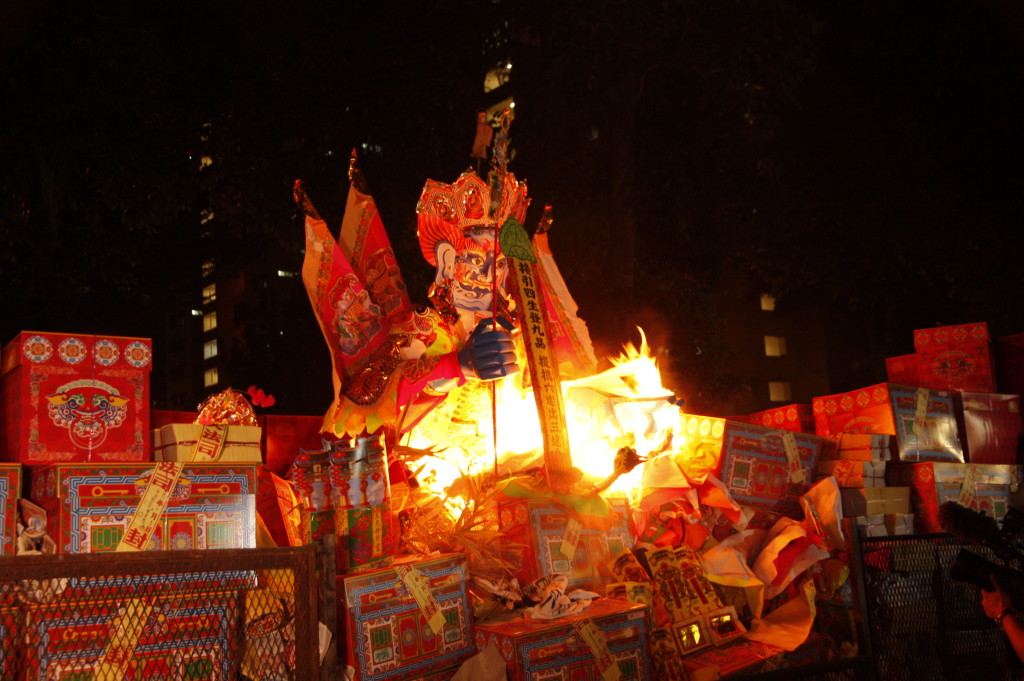
The King of Ghosts and the treasure chest paper offerings – brings to a close the salvation for lost souls with Xuan Jiang Dian (photo Sugen Ramiah)
For me, it has been a rewarding experience, to understand the concept of salvation in an afterlife. As paper burned into ashes and darkness turned to light, I prayed that the lost souls had now found, peace.
Sugen Ramiah a teacher by training, has been observing and documenting Chinese festivals and rituals conducted by temples for the past one and half years.
by Sugen Ramiah
It was the ninth day of the seventh lunar month, and I have been busy documenting rituals and customary practices of the Hungry Ghost Festival. Every temple or ‘sintua’ (a group of devotees with no temple and who gather in a place which host the deity statues and censers) has its own designated date, to perform cleansing rituals for the wandering souls. Released into the human realm, these are souls who have no one to remember them and assuage their suffering by making them offerings. This year I was fortunate to have been invited by the members of ‘Xuan Jiang Dian’ (Tortoise Hill) temple, to observe their seventh month memorial service.
Due to lack of space at the temple’s premises, a temporary tentage was set up in an open car park located in Bukit Merah View. Preparatory rituals had begun earlier that day, performed by visiting priests from China. These rituals were to cleanse and protect the holding ground from negative elements.
Members of the temple and fellow Brownies(the volunteers at Bukit Brown) gathered in the late afternoon and were greeted by the thunderous sounds of the temple’s newly formed gongguan (percussion) troupe.
We left the premises just before 7pm to gather lost souls from two different locations. The first was at the East Coast Park beach, followed by Bukit Brown cemetery. When we reached our first destination, a temporary altar was set up and chanting accompanied by the sounds of cymbals and drums began.
The Chinese believe that once a soul departs from its mortal body, it loses its direction. Lanterns help to light the way for the soul. Since they were going to call on many souls, a two metre long paper inscription fixed to an extended bamboo branch was used; It was to ensure maximum visibility for the souls. As the priests sang, the branch was flagged rhythmically according to the melody. Once the lanterns returned to ashore, offerings of paper money were burnt and the gongguan troupe received the wandering guests with their music.
The altar was then dismantled and we proceeded to our next destination, the Bukit Brown Cemetery. As the convoy led by the gongguan transported on a brightly decorated truck, turned into the Sime Road, the gleaming LED lights of the truck, glowed in the poorly lit road. The deafening clangs and gongs must have awakened the neighbouring residents including the residents of Bukit Brown. As the truck drove past the cemetery gates, the buses stopped at the T-junction of Sime and Kheam Hock Roads with Jalan Halwa. A few of us alighted and ran through the cemetery gates with heightened anticipation.
As we entered, the vision of a trail of lighted candles against the backdrop of the night sky, took our breathe away.
The temporary altar was once more erected, but this time they placed a special tablet dedicated to the lost souls of Bukit Brown. As the priests chanted and called upon the countless souls, I was moved by their rituals. Unlike the powers that be who have abandoned them, I was glad there were still Samaritans who remembered them.
These are the souls of ancestors who have been long forgotten, infants and the unsung heroes who died tragically during the war. To give them temporary lodging, meals to feed their hunger and prayers to purify their weary souls, is by far the greatest act of kindness and filial piety.
As the priests circled the roundabout, there was a sense of closure in the air, as though the souls have found the light. To conclude the rituals, paper money was burnt as an offering and the gongguan troupe signaled the close of the ceremony at Bukit Brown.
It was time to return to Bukit Merah for the concluding rites. We alighted along the main road, about five hundred metres away from the holding ground and lined up for a procession. The gongguan troupe on the glittering LED flower truck led the way. Following immediately behind, the tablet dedicated to the wandering souls, the lanterns carried by devotees and participants holding joss sticks. This drew the attention of the residents in the neighbourhood and the people eating at the hawker centre.
As we marched triumphantly down the street with our “guests”, we felt that we had accomplished something meaningful: We had found and acknowledged in our hearts, the forgotten souls of Bukit Brown.
Sugen Ramiah a teacher by training, has been observing and documenting Chinese festivals and rituals conducted by temples for the past one and half years.
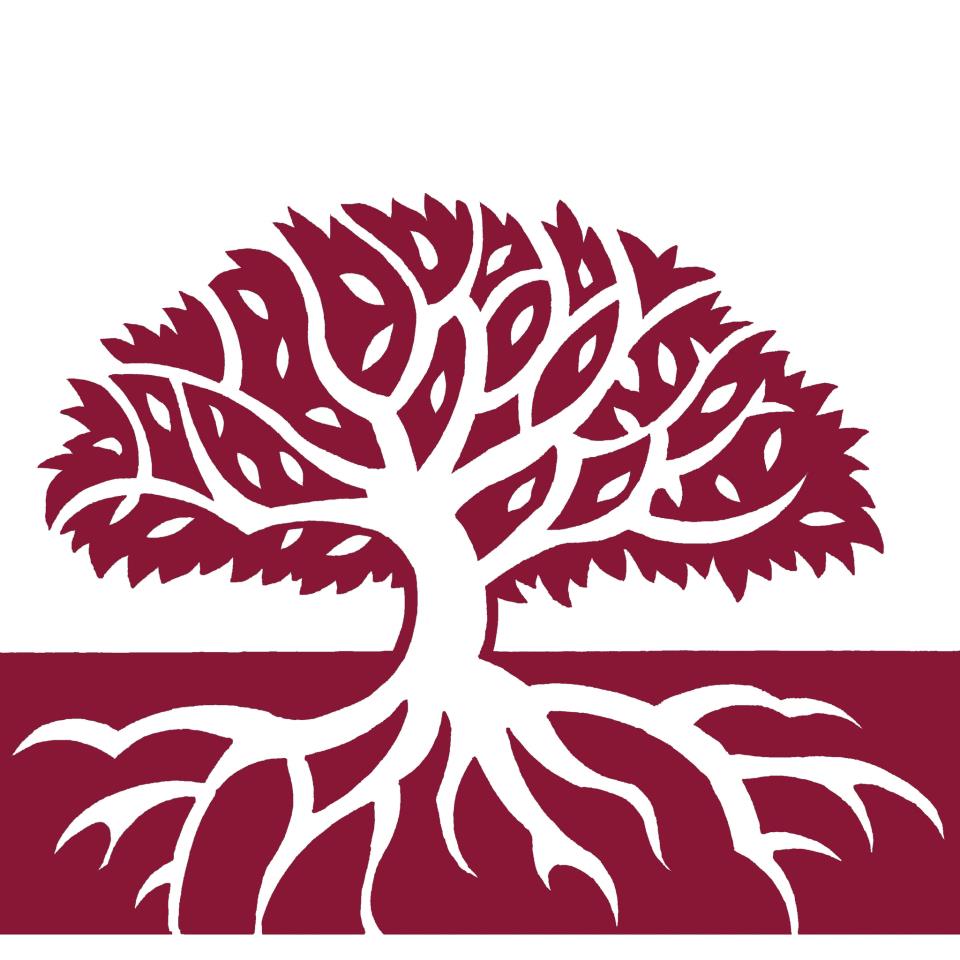

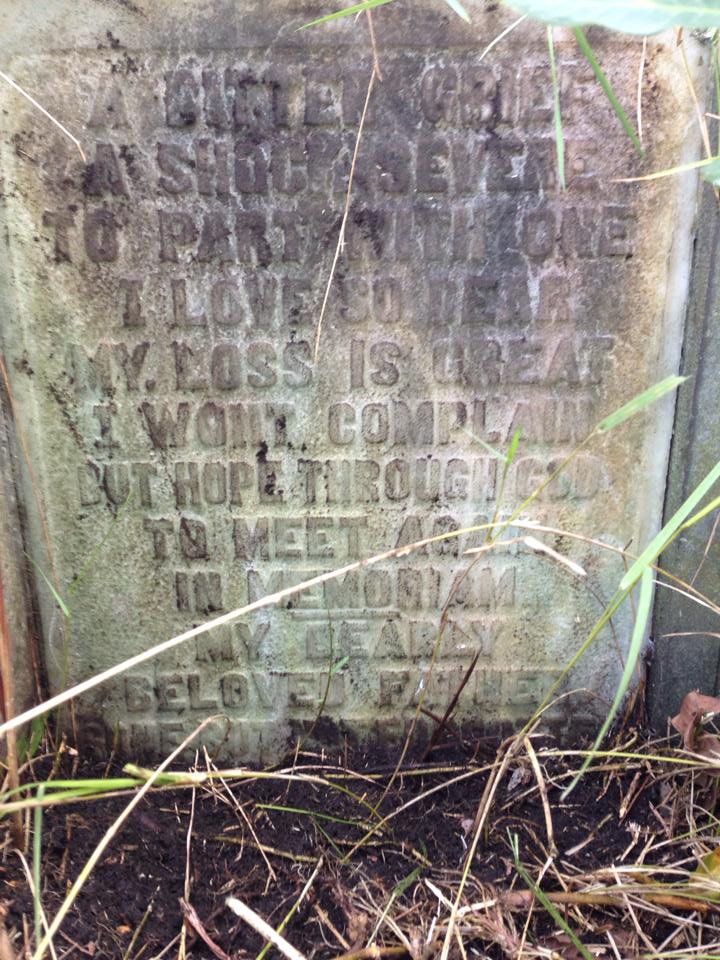



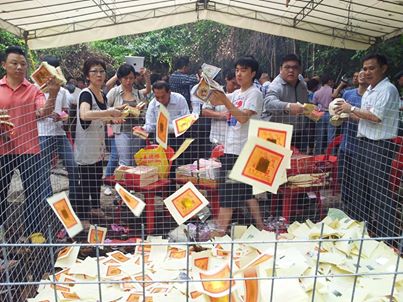
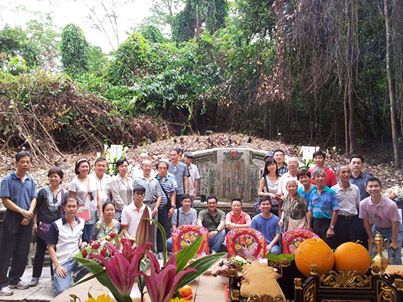
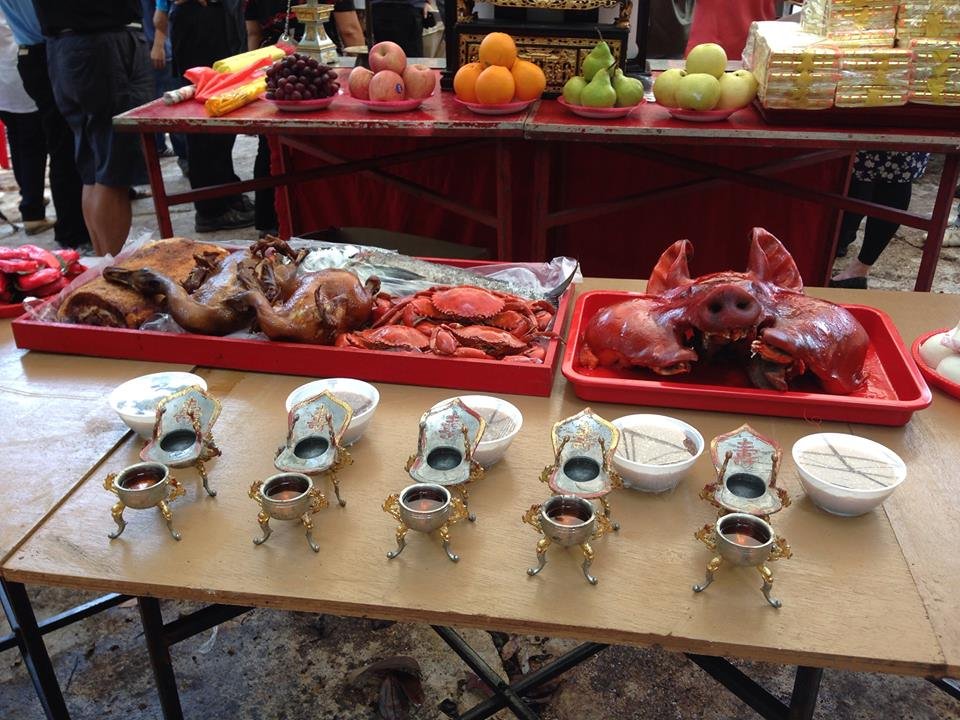









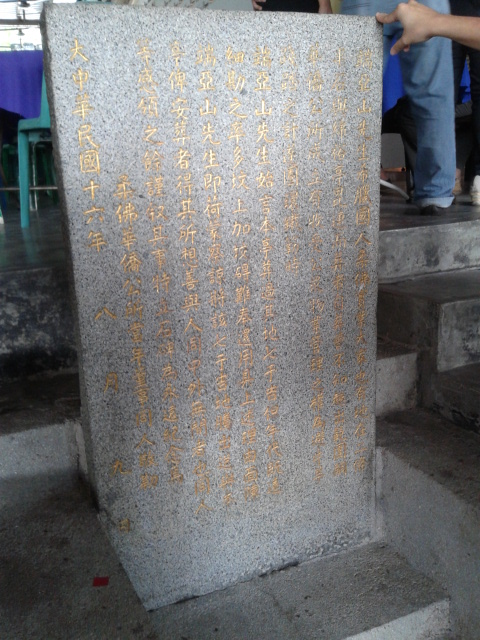
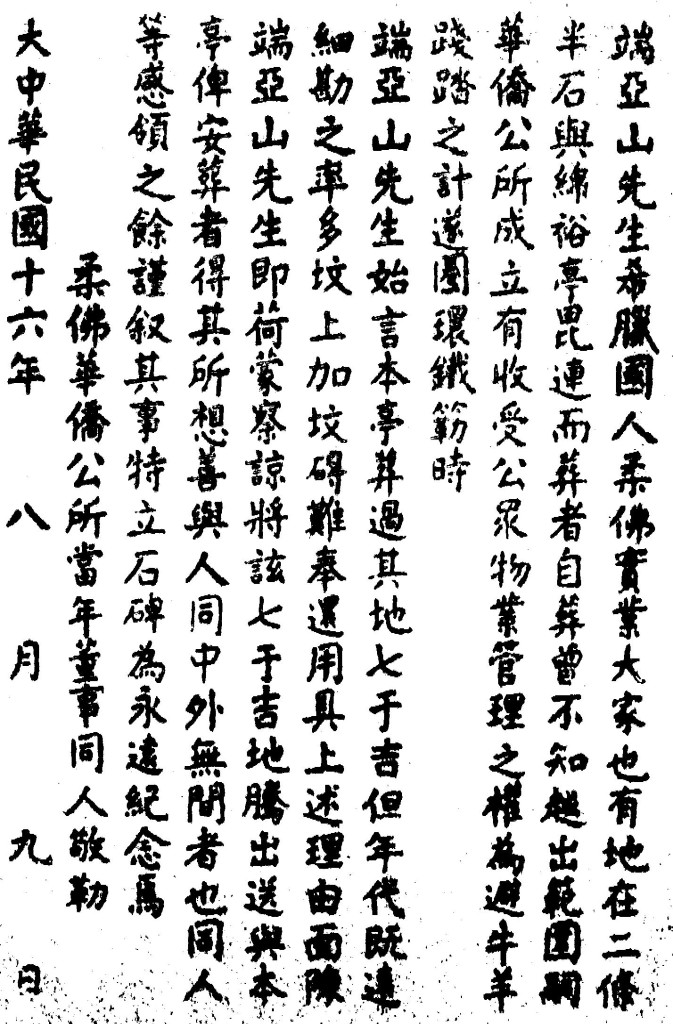
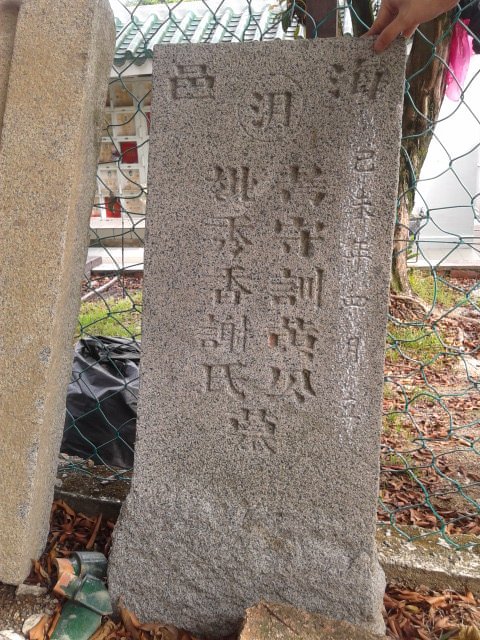
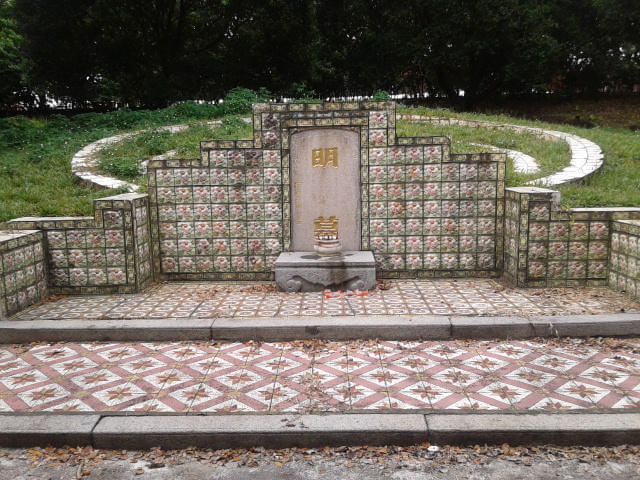



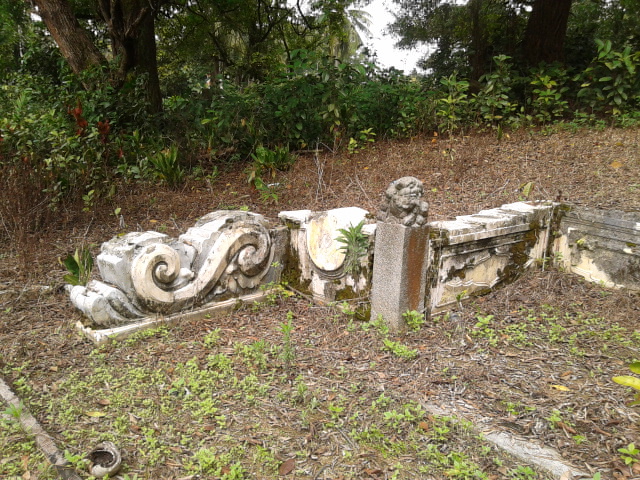
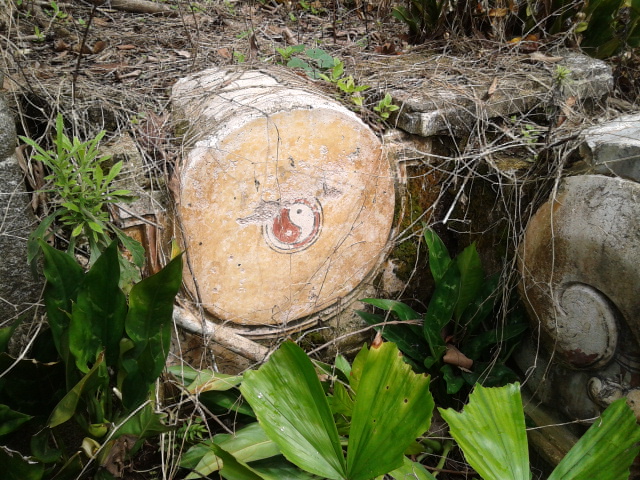
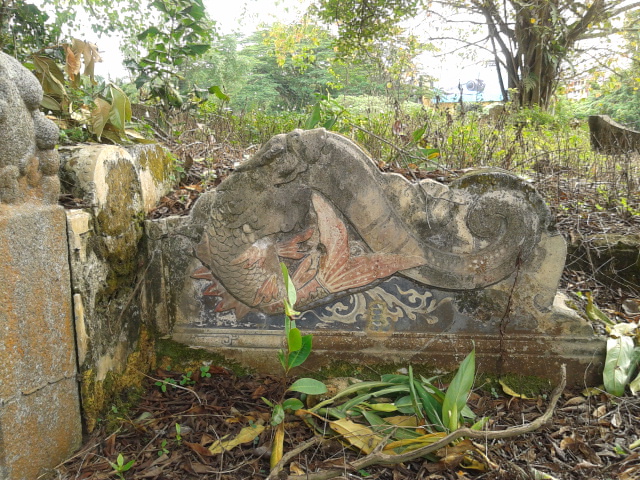
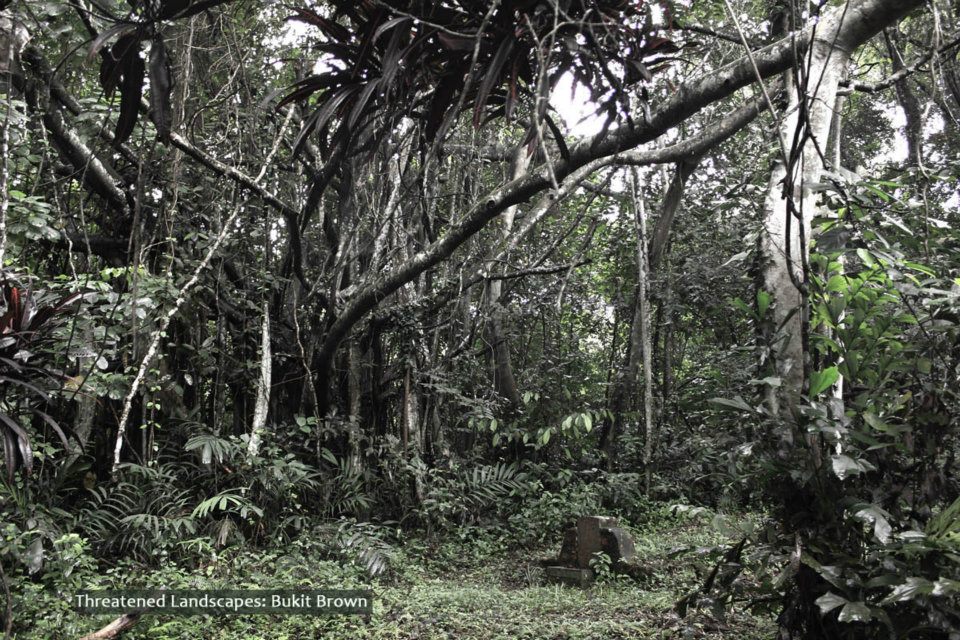
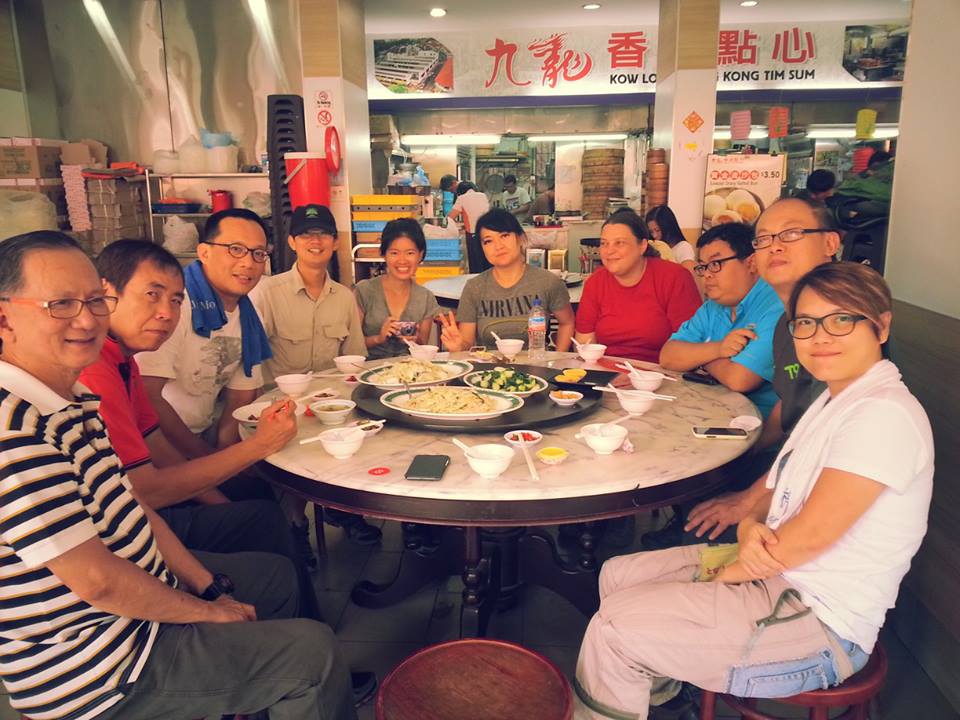




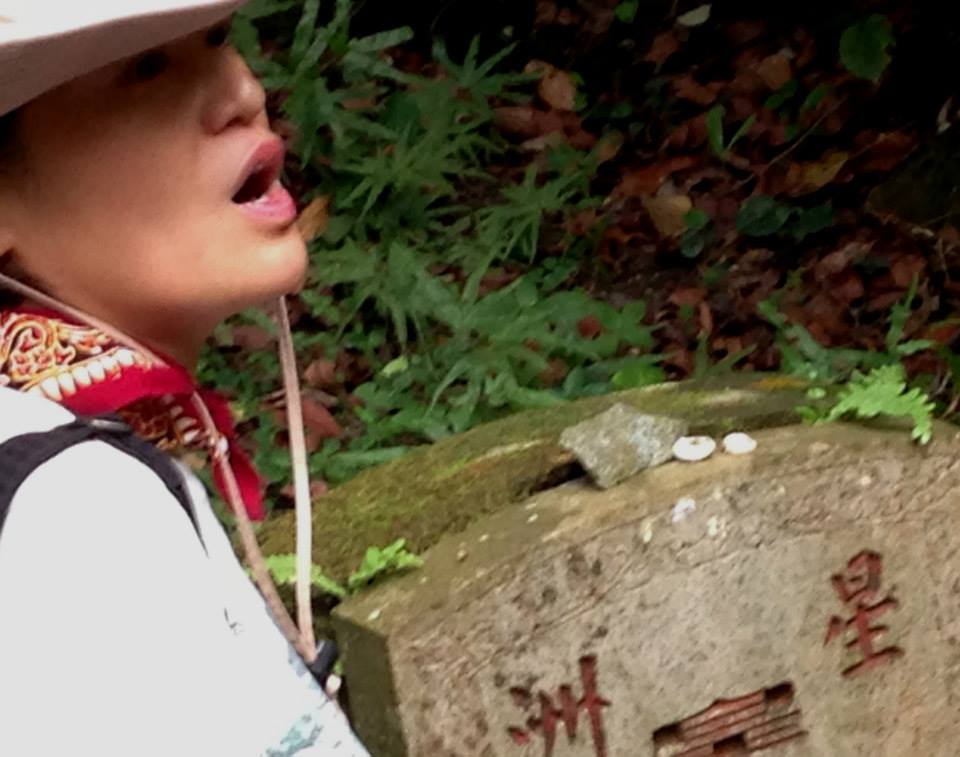
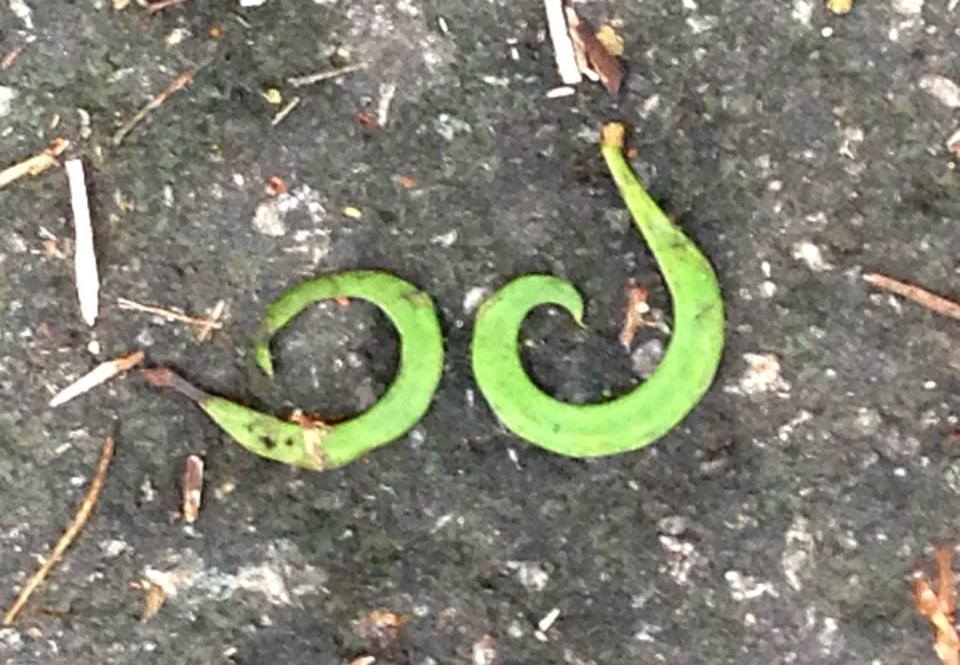
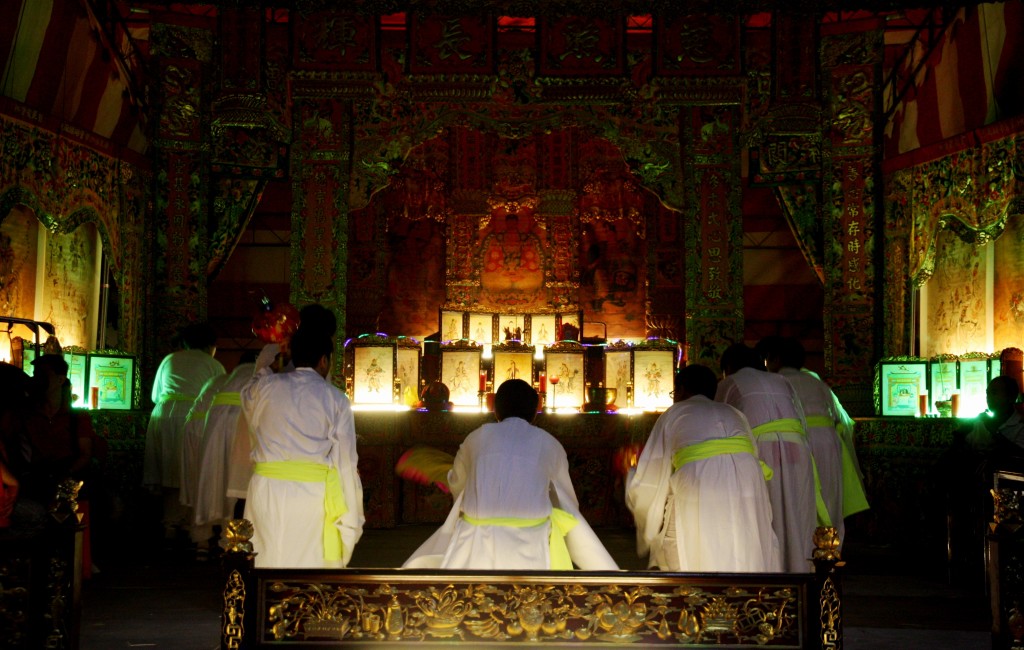
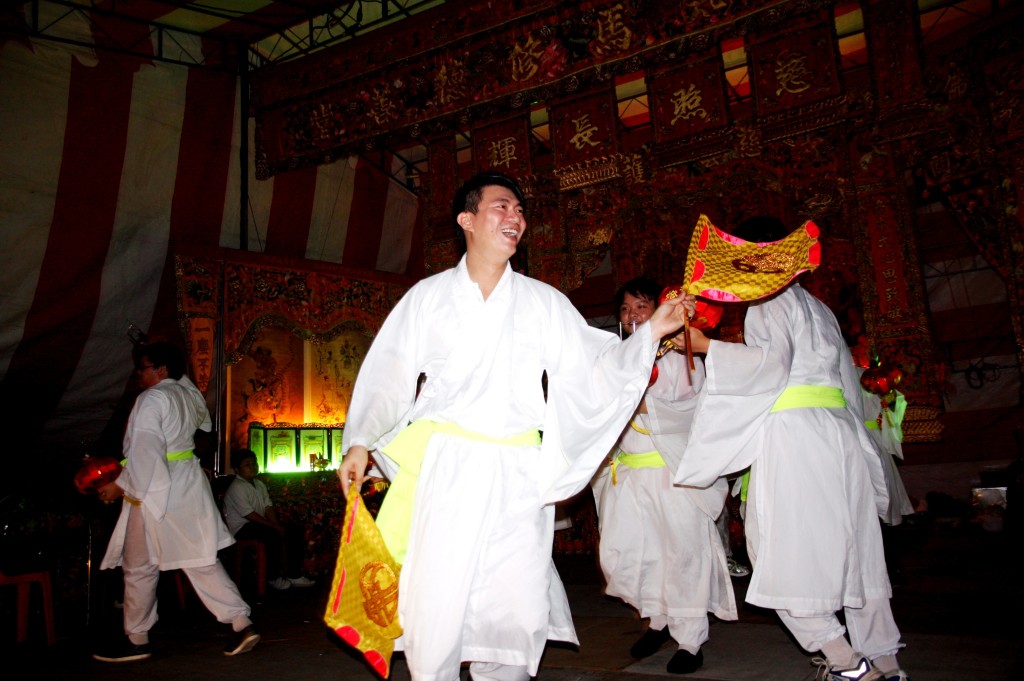
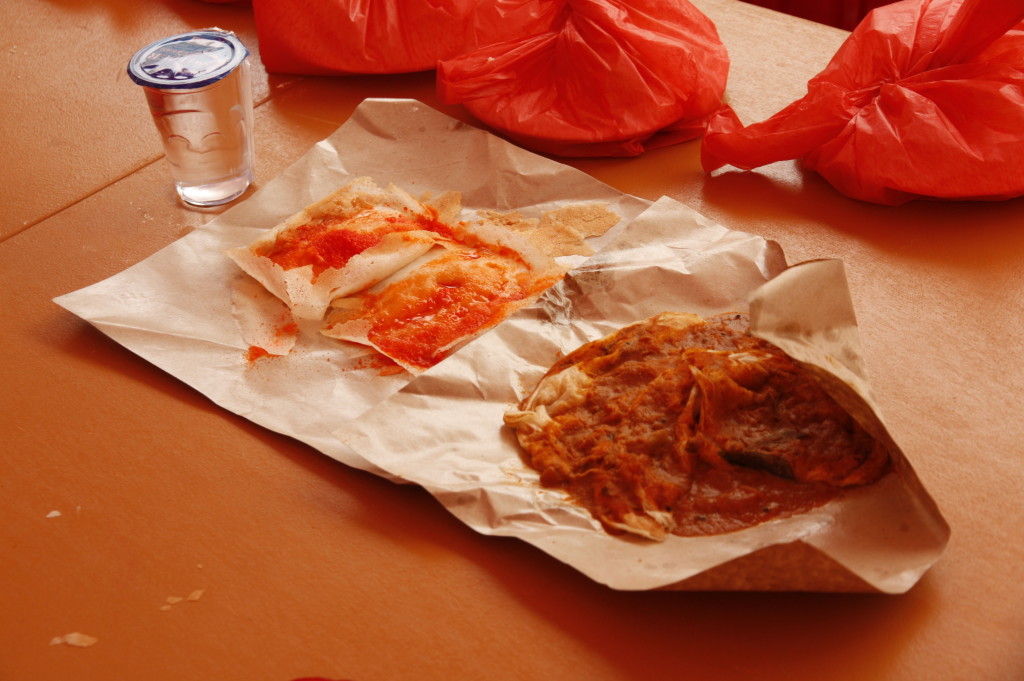
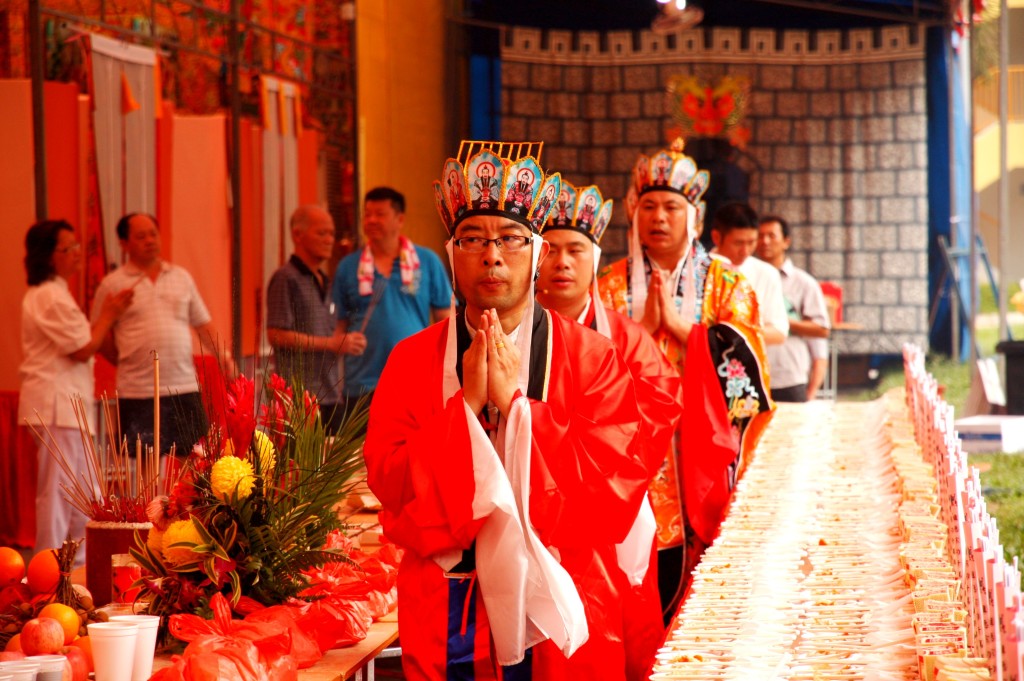
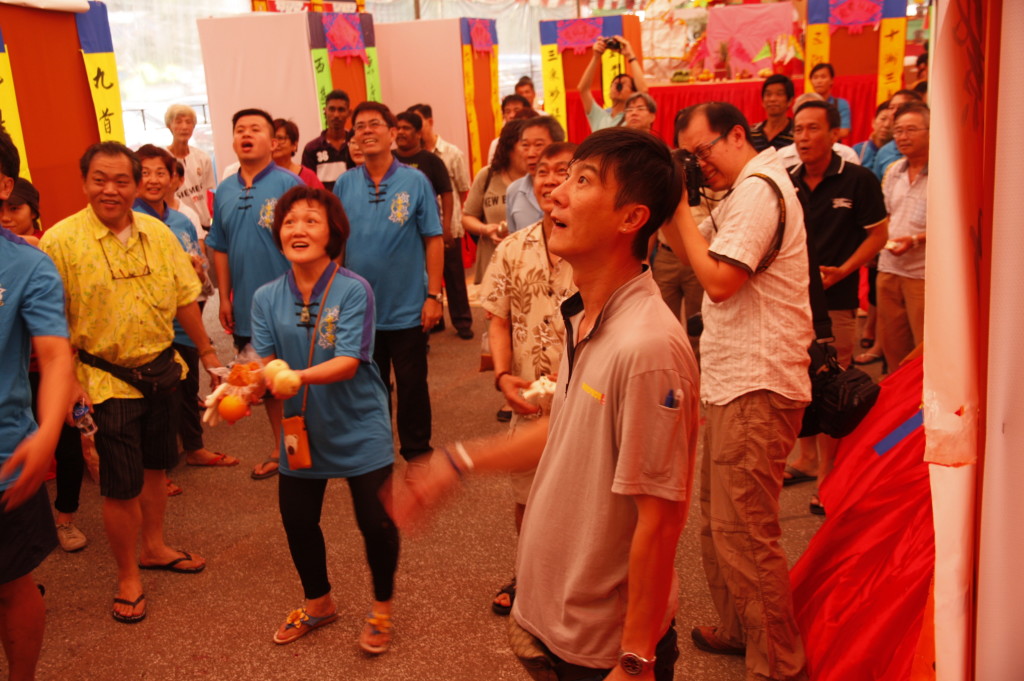



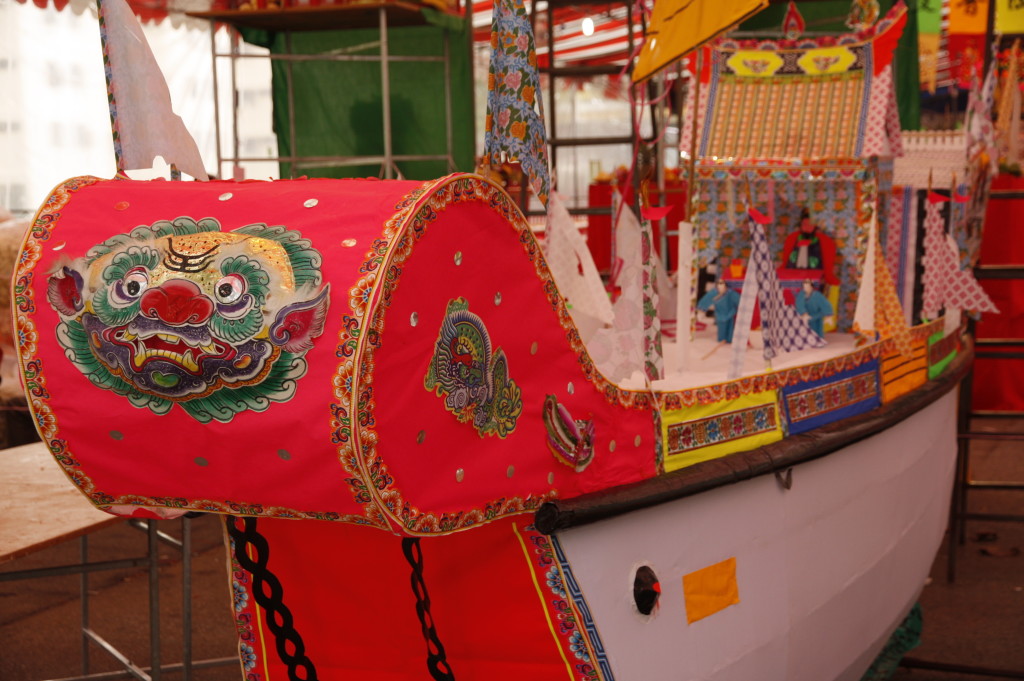
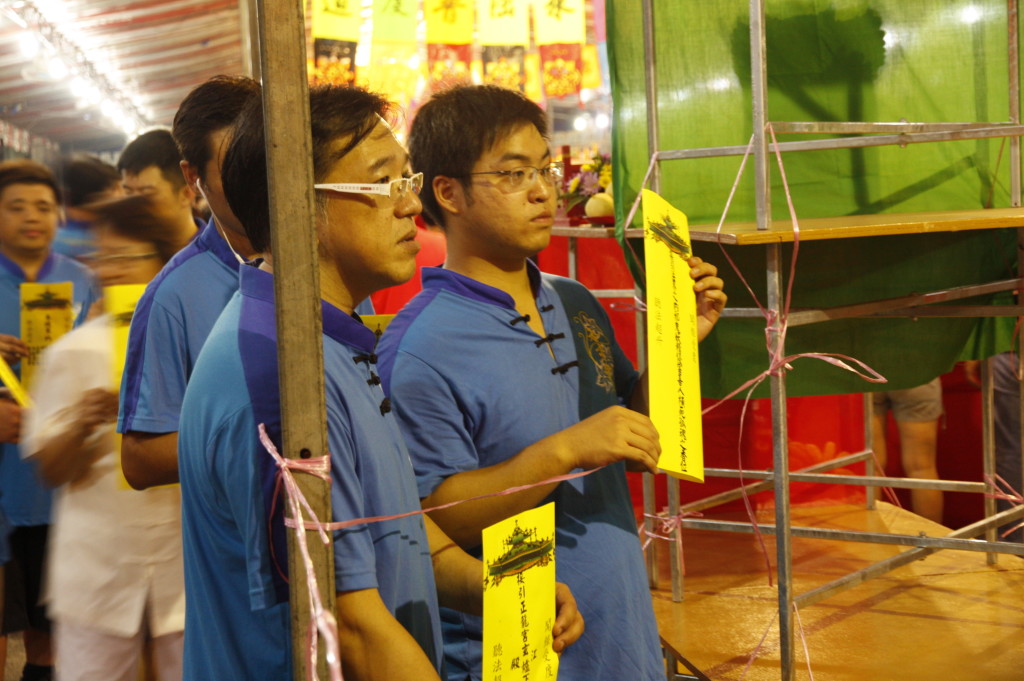
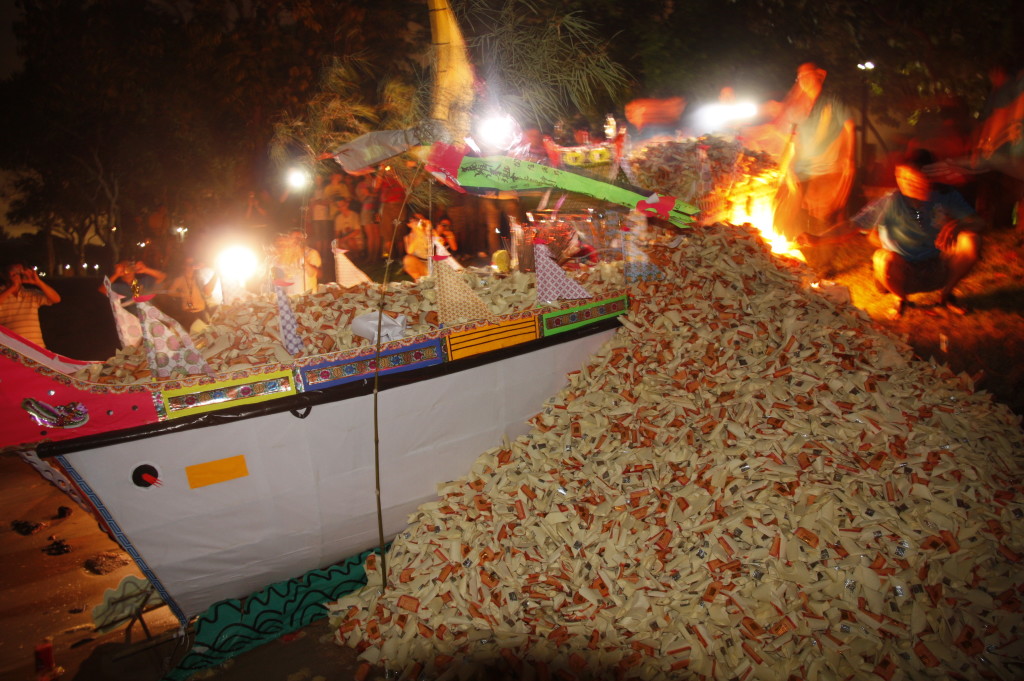

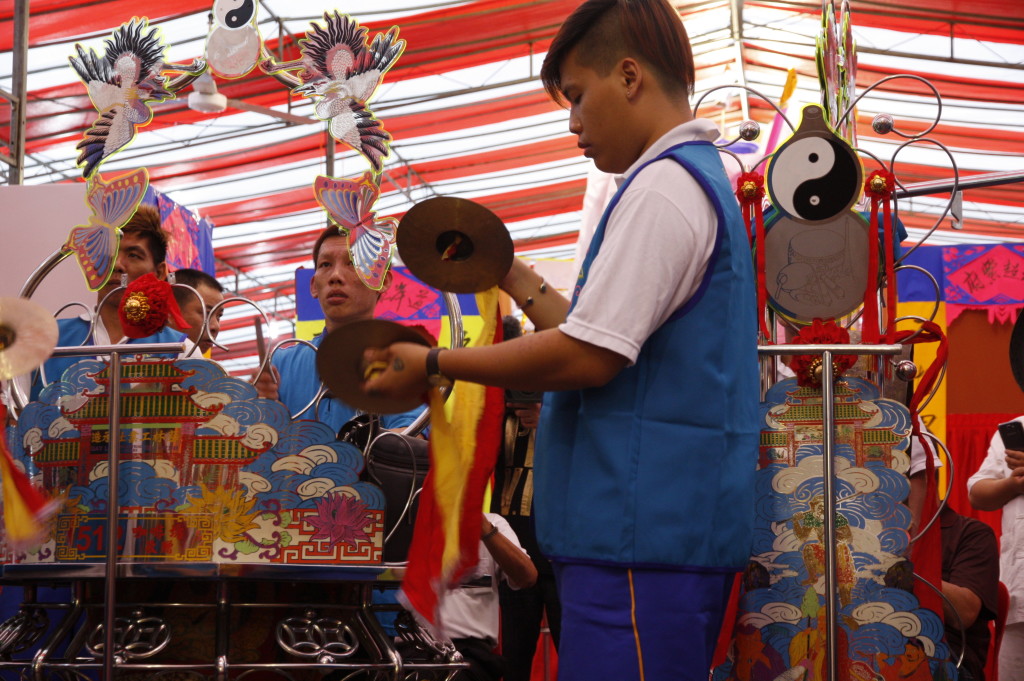
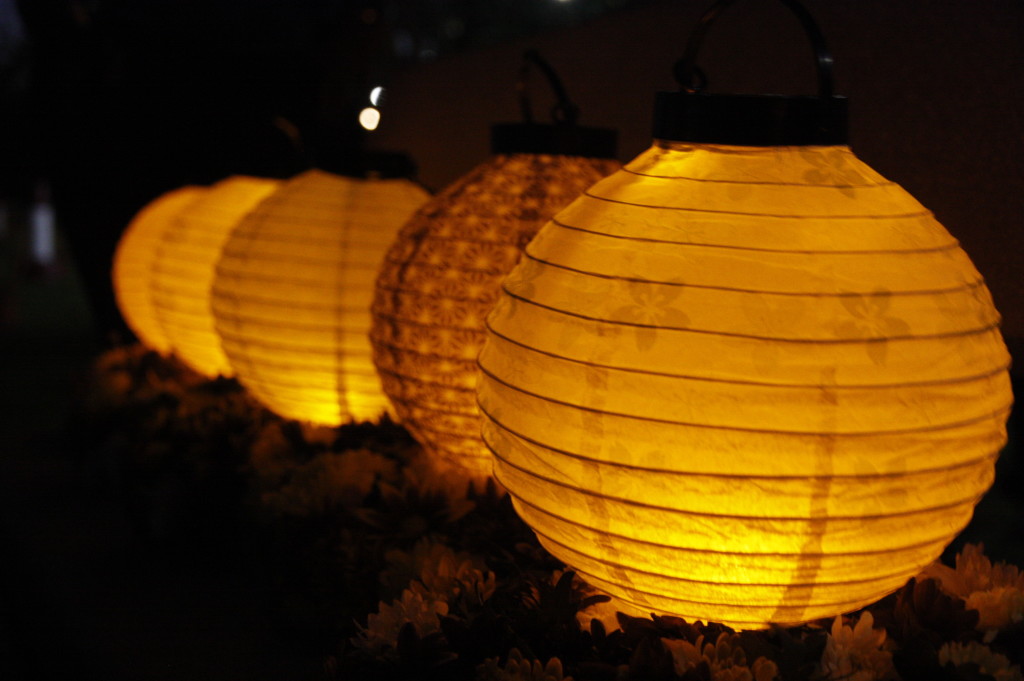
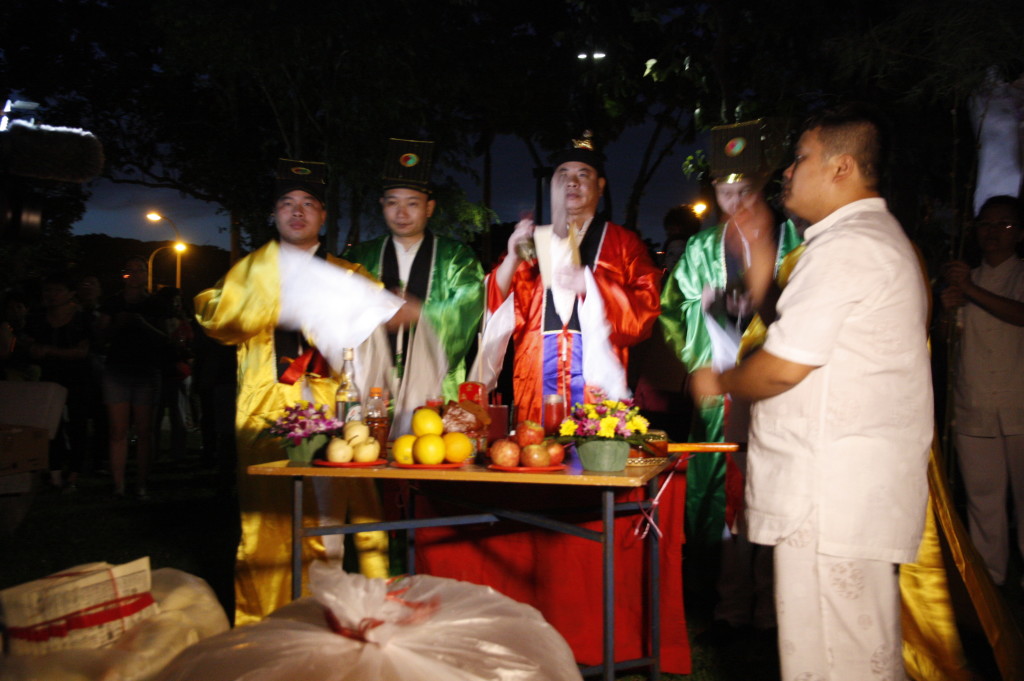
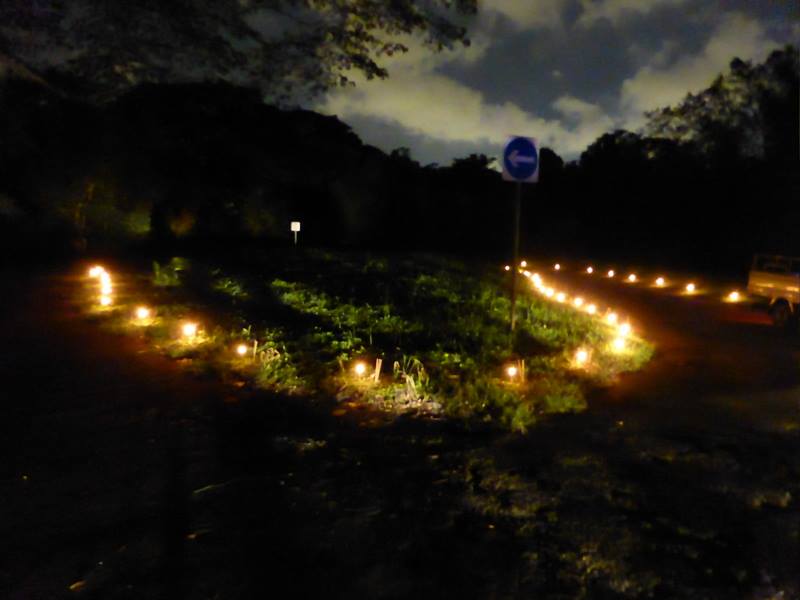

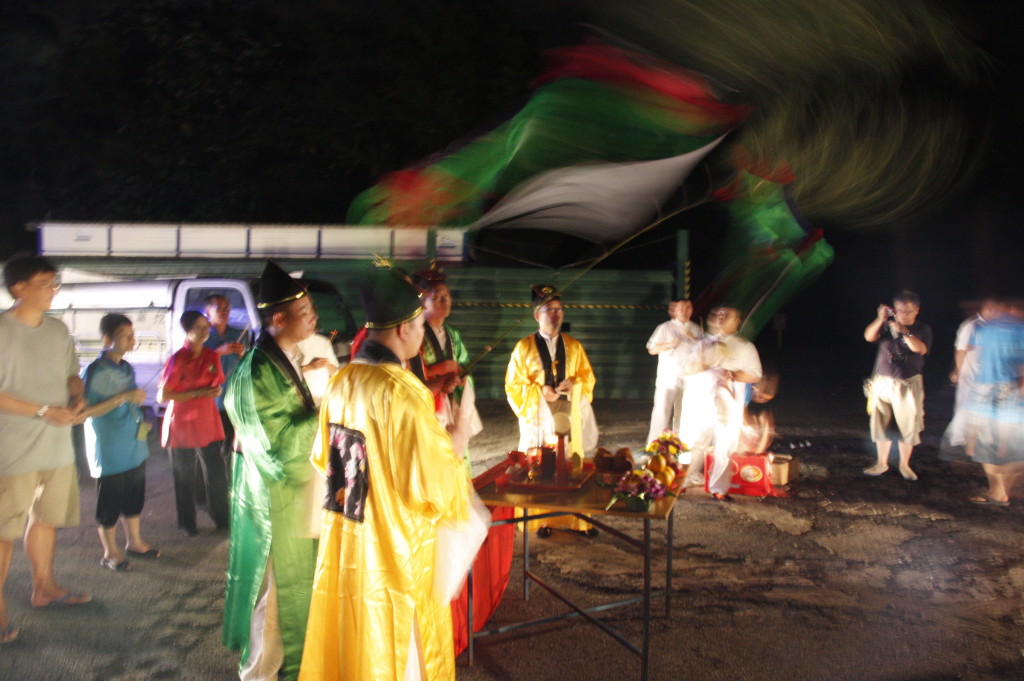
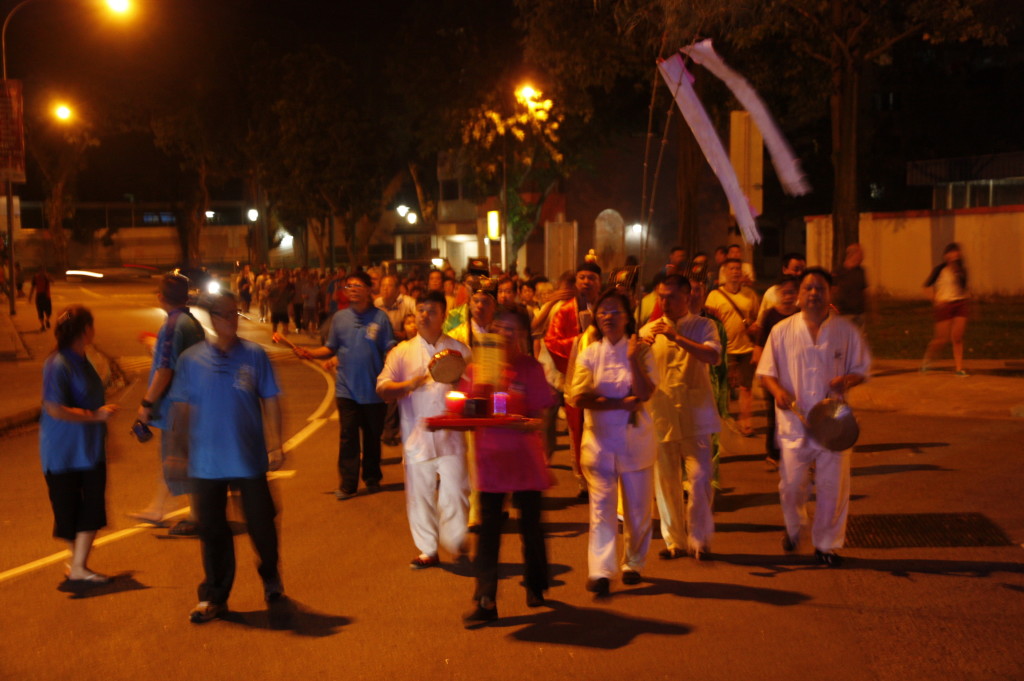
Recent Comments